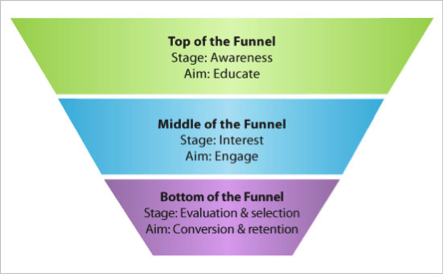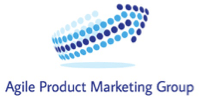
Providing sales with the content and context they need to effectively engage and support the buyer’s journey :
What content do you need for the last leg of the buyer’s journey? How do you support the bottom of the funnel as your prospects begin to engage with sales?
The concept of the Buyer’s Journey is essentially a framework that
describes the cognitive steps each buyer must personally traverse leading from apathy (Do I care?) to commitment (How can I buy this?) This concept applies almost universally whether you’re buying a dishwasher, a car or a salesforce automation platform. According to a variety of research the initial phases of the buyer’s journey account for anywhere from 57%-90% of the decision process and involve little to no direct conversations with the vendor. The bottom of the funnel is the point where sales teams become more actively involved and need to support the latter stages of the buyer’s journey. Understanding and incorporating the concepts below can greatly enhance your sales enablement efforts.
At a high level the Buyer’s Journey consists of three distinct stages:
What content do you need for the last leg of the buyer’s journey? How do you support the bottom of the funnel as your prospects begin to engage with sales?
The concept of the Buyer’s Journey is essentially a framework that
describes the cognitive steps each buyer must personally traverse leading from apathy (Do I care?) to commitment (How can I buy this?) This concept applies almost universally whether you’re buying a dishwasher, a car or a salesforce automation platform. According to a variety of research the initial phases of the buyer’s journey account for anywhere from 57%-90% of the decision process and involve little to no direct conversations with the vendor. The bottom of the funnel is the point where sales teams become more actively involved and need to support the latter stages of the buyer’s journey. Understanding and incorporating the concepts below can greatly enhance your sales enablement efforts.
At a high level the Buyer’s Journey consists of three distinct stages:
- Awareness Stage: The buyer becomes aware of a business problem and takes steps to determine the cause,
- Consideration Stage: The buyer understands the cause of the problem and is researching possible solutions.
- Decision Stage: The buyer has identified the best solution and is ready to implement it to solve the problem.
However the bottom of the funnel decision stage can be further broken out in two more stages: where buyers evaluate your offers and determine ultimately whether they will solve that problem by purchasing from you, your competition or doing nothing i.e not making any purchase.
- Evaluation Stage: At this stage the prospect is weighing specific product offerings and needs to understand key implementation considerations and pros/cons of alternatives. They will be looking at functionality and how it relates to the capabilities needed to address their problem.
- Commitment Stage: At this stage the prospect needs to develop justification and confidence in their decision to buy a specific product. They need be convinced that (and often times convince others) they are not are not putting their reputation at risk and/or unwisely spending funds.
Content requirements to support the final two stages of the buying cycle
Most B2B buyers only care about the value you bring to their business. They really don't care about your products. Yet, most communications and sales conversations are product-focused and not focused on customer problems. This often is amplified even further as you go down the funnel because of the false assumption “I have them interested, so now I can get into the features of my product!” Unfortunately, this type of thinking misses the mark and is misguided when the result becomes feeds and speeds and features that don’t address the customers needs. To keep the buying process on track requires continuing to align your conversations and content to they buyer’s needs. So what are they thinking and what do they need?
When a prospect is in evaluation mode, they need more detailed product information such functionality, modules API, support, customization etc,, as well as vendor comparisons, and help understanding key implementation considerations and success factors. At this stage your content should provide guidance on the type of functionality that should be a minimum expectation in any product. It should focus on capabilities rather than features and speak to your functionality and how it will impact their results. For example you could provide:
- Competitive comparisons
- RFP Template/ Checklist
- A mapping of features to advantages
- A buyer’s guide- what all buyers should look for
- Visionary/Leadership White Papers on how your approach is different than competition
- Implementation plans project success factors
- Customer Success stories with metrics
- Testimonials Named Customers who purchased and why (not what..)
- ROI and Build vs. Buy Models to provide business justification
- Corporate Information on stability, vision and road map and investments
As you might suspect these stages require an intimate understanding of your products and their technologies, features and capabilities as well as a deep understanding of the buyer’s requirements and problems to clearly articulate how you have the best fit for their needs. You need to understand the metrics and proof points that will drive their decisions and alleviate their concerns, as well as be able deliver the materials to convince them and back up your claims.
Are you focused mainly on the top of the funnel? Are you delivering on each of these stages today and if not do you have the product marketing expertise to deliver on them?
Get more information here:
Content Mapping Template : A marketing asset inventory and gap analysis tool
8 Critical Sales Enablement Mistakes: Supporting the bottom of the funnel to better align marketing and sales
